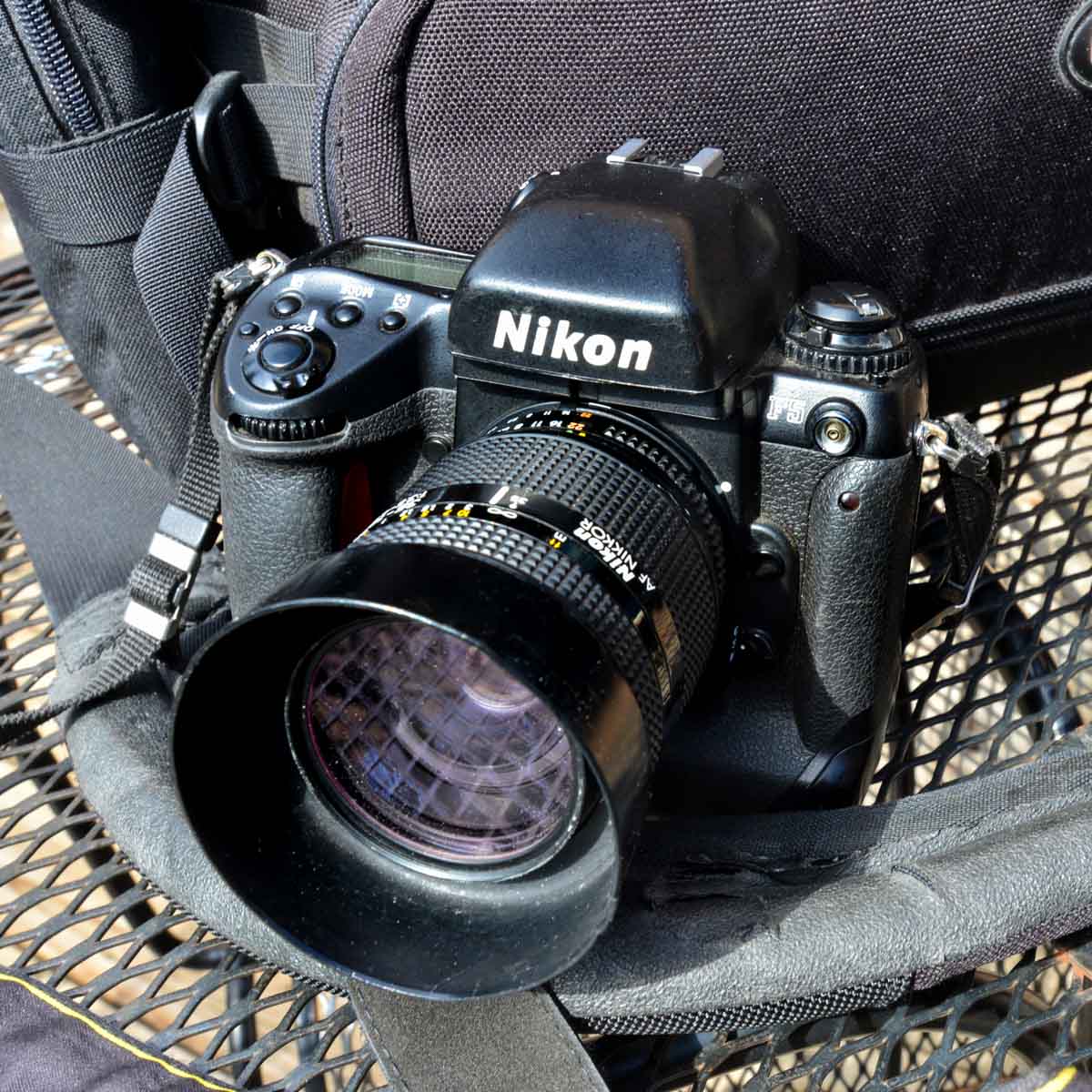I always loved the original Agfa Scala 200X black and white slide film when it was available back in the late ‘90s. So I was thrilled when Adox pulled a rabbit out of their hat and released their version of Scala to the film stocks available to photographers. Living in Canada makes using Scala 160 a bit of a logistics challenge. Order from one location in the US and then ship back to a different location in the US for processing. Both firms do a fine job, but sometimes the wait seems interminable. Still, it is worth it in the end.
These shots were taken with my Nikon F5 using my Nikkor 35-105mm f/3.5-4.5 AF lens. I’ve had this lens since well before I got the F5 and it remains one of my favourites. There is no theme to these photos and almost all of the shots shown here were from various rolls, all exposed in 2019.
I find that Scala 160 has a creamy look to it, a smoothness that transitions nicely from shade to shade. It loves strong light but shadow detail is strong and clear.
The Scala 160 film canisters have no ISO coding so the camera’s ISO setting must be set manually. Of course, my memory has lapsed more than once – or should I say that my habit, my routine of many years using the F5 lulled me into inattention to this detail. This, of course, means that my next roll (if not Scala) will almost certainly be under or over exposed! So, perhaps it would be wise to only pack some Portra 160 as your alternative emulsion for that day’s shooting. Whatever your reason (excuse) it would be a good idea to set some kind of ISO reset reminder.





I like to shoot a variety of subjects. Frame 1 was shot at an old building site. I like how the similar colours were portrayed in B&W. As you gaze at the photo the detail seems to emerge. Frame 2 was shot during a maintenance job on a working farm; the skin and veins have a lovely look to them. Frame 3 was taken on a bright day while on a hike in a nearby Provincial park. I find that the contrast is highlighted nicely by Scala 160. The fungus in Frame 4 illustrates the way Scala 160 pulls out the slightest variation in shade. The ivory-coloured fungus is far more three-dimensional than it looked in real life. The old wooden fence in Frame 5 was situated just off a side road north of Toronto. Here Scala 160 shows the shadow detail quite well, while the portion in open sun is not blow out.
I did not manipulate any of these shots. This is how they looked on film. All were shot using the F5’s matrix metering in either Program mode or Aperture Priority mode.
~ Wyman
Submit your 5 Frames… today
Get your own 5 Frames featured by submitting your article using this form or by sending an email via the contact link at the top of the page.
Share your knowledge, story or project
The transfer of knowledge across the film photography community is the heart of EMULSIVE. You can add your support by contributing your thoughts, work, experiences and ideas to inspire the hundreds of thousands of people who read these pages each month. Check out the submission guide here.
If you like what you’re reading you can also help this passion project by heading over to the EMULSIVE Patreon page and contributing as little as a dollar a month. There’s also print and apparel over at Society 6, currently showcasing over two dozen t-shirt designs and over a dozen unique photographs available for purchase.








4 responses to “5 Frames… With Adox Scala 160 (35mm / EI 160 / Nikon F5)”
What did you scan these frames with? At a lab? The scanner has extracted the whole gamut of tones beautifully.
I scanned them at home with my Epson V750 Pro. I find it to be an excellent machine and it seems to like Scala.
A nice series of images, thank you for the article. Might have to give it a try.
Thanks for the input. Yes, I treat myself to Scala once a year. I really think more people should try iy.